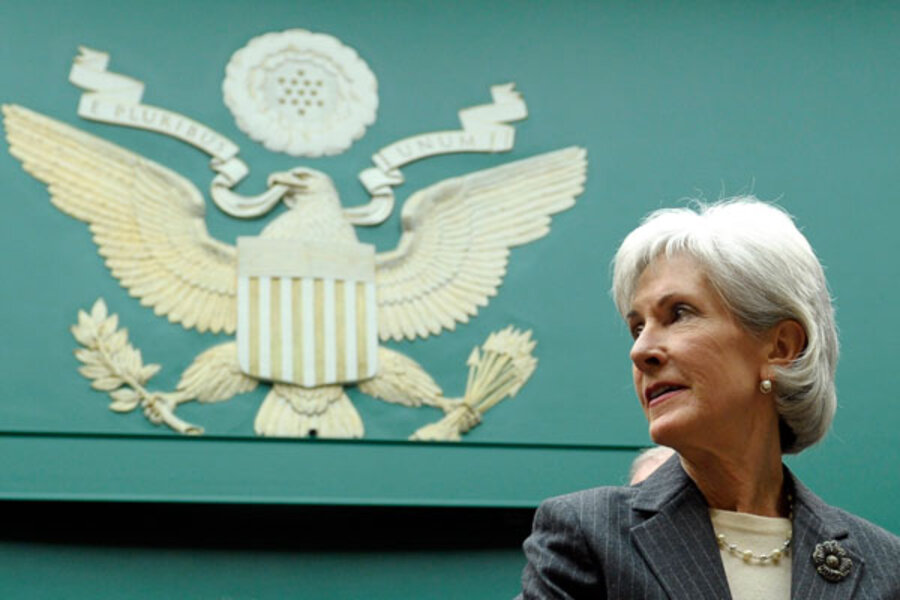Obamacare enrollment: what the new numbers really mean
| Washington
Health insurance enrollments are gaining momentum. Four times as many people enrolled in private coverage via HealthCare.gov in November than in October, according to figures released Wednesday by the Department of Health and Human Services (HHS).
But the numbers are still small, relative to the Obama administration’s enrollment targets in its implementation of the Affordable Care Act (ACA).
More than 100,000 people enrolled in November on the federal website, HealthCare.gov, up from about 27,000 in October. An additional 148,000 people enrolled in coverage in November via the state-run exchanges operating in 14 states plus the District of Columbia, almost double the October figures. All told, nearly 365,000 people have enrolled in private coverage between Oct. 1 and Nov. 30.
The Obama administration’s original enrollment goal for October alone was 500,000, 3.3 million by the end of December, and 7 million by the end of March, when the 2014 open enrollment period ends. In recent days, administration officials have said they thought they could still reach their target.
On Dec. 1, the administration began a new push to get people to enroll, after announcing that HealthCare.gov was functioning well for 90 percent of people who visited. Some news reports have indicated a “surge” of enrollments since then, though the administration has not confirmed that.
Still, the botched rollout of HealthCare.gov has put many administration officials, including President Obama, in a crucible of public outrage and embarrassment. But perhaps no one has faced more heat than Kathleen Sebelius. On Wednesday, a weary-looking HHS secretary told a House committee that she has launched an internal review into the failures of the rollout and is taking measures to ensure smoother functioning of the department’s Centers for Medicare and Medicaid Services (CMS), the agency in charge of ACA implementation.
“Now that the website is working more smoothly,” Secretary Sebelius said, “I've determined it's the right time to begin a process of better understanding the structural and managerial policies that led to the flawed launch so we can take action and avoid these problems in the future.”
Sebelius announced that she has asked HHS’s inspector general to review the development and management of HealthCare.gov, including acquisition of contractors and contractor performance and payment issues. The price tag on the site is $677 million, $319 million of which has been spent through the end of October.
The secretary is also establishing a new position at CMS – chief risk officer – to focus on reducing the problems involved with large-scale initiatives such as the development of HealthCare.gov. And she is updating CMS’s approach to management of contractors and procurement.
Mr. Obama has said that he will seek reforms to the entire federal procurement process for information technology, long an area where the federal government has struggled.
In the hearing before the House Energy and Commerce Committee, Sebelius sought to put the troubled website launch behind her and focus on the momentum building toward higher signup rates. But she acknowledged that the problems set back efforts to promote enrollment, especially among younger, healthier Americans who may be less motivated to sign up.
“We know that a lot of younger Americans are very tech savvy, want a fully functioning, easy-to-operate site, and so getting HealthCare.gov up and running correctly also helps with some of those targeted numbers,” Sebelius said.
When asked if she would have delayed the site’s Oct. 1 launch, had she known the problems it was facing, she suggested she might have done things differently.
“I would have probably done a slower launch, maybe with fewer people, and done some additional beta testing,” Sebelius said.
She declined to give herself or HHS a grade for the launch. “I’ve already said that I think the launch was flawed and failed and frustrating for millions of people – unacceptable,” she said.
Sebelius also denied that more people would end up losing coverage than gaining coverage under the ACA, as some members of Congress asserted. Now that the website is functioning for the “vast majority” of people, those who have had their policies canceled can go shop for a new plan.
HHS highlighted additional health insurance enrollment figures Wednesday, including those who have qualified for Medicaid, the federal-state partnership that provides health coverage for low-income people. Through the end of November, some 803,000 people have been found eligible for Medicaid or CHIP, the Children’s Health Insurance Program.
Another 1.9 million people have been found eligible by buy insurance on either the federal or state marketplaces, but have not yet selected a plan.
HHS’s enrollment numbers include those who have signed up for a plan, but not yet paid. Payment for coverage that begins Jan. 1, is not due until Dec. 31.







